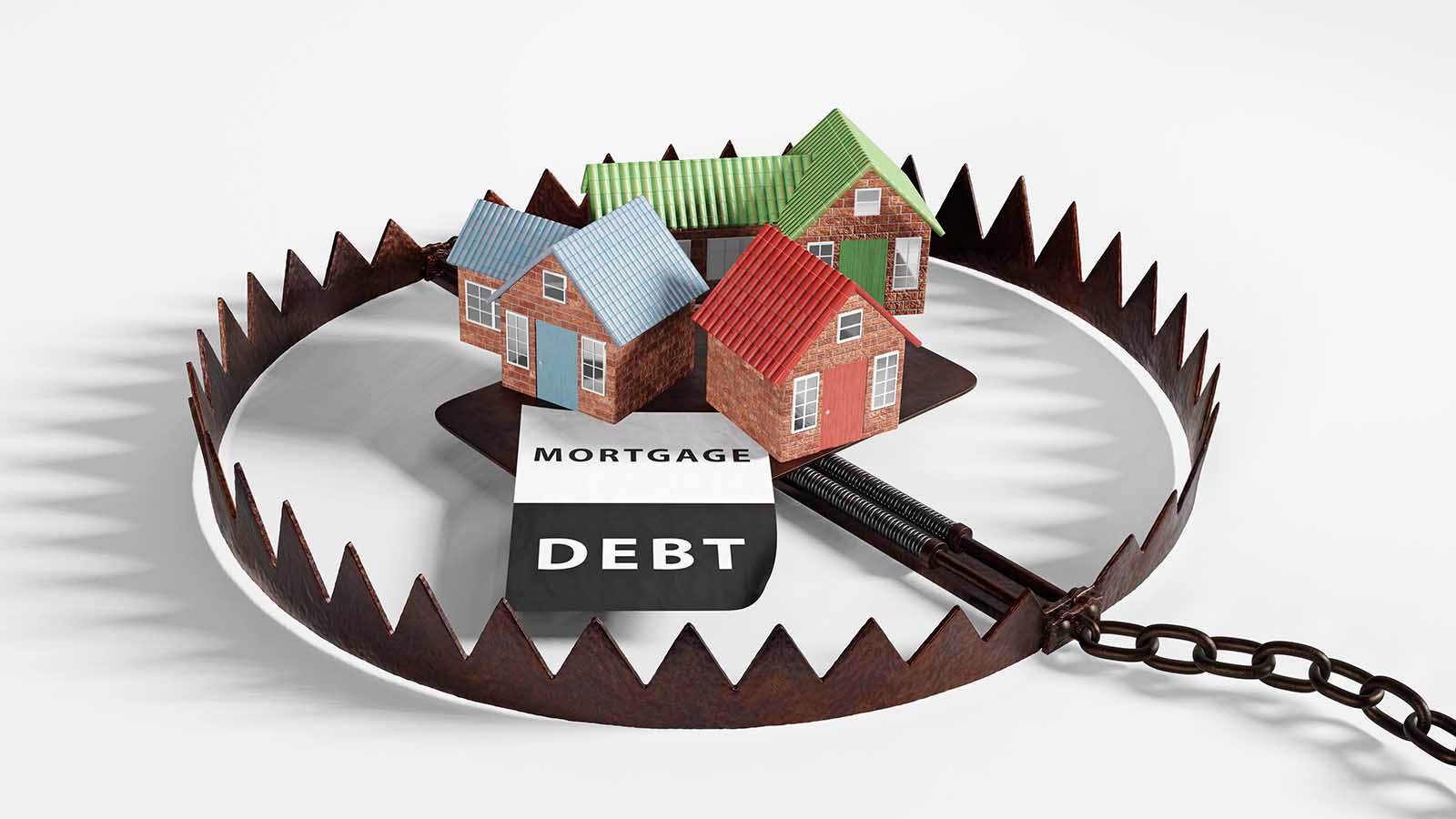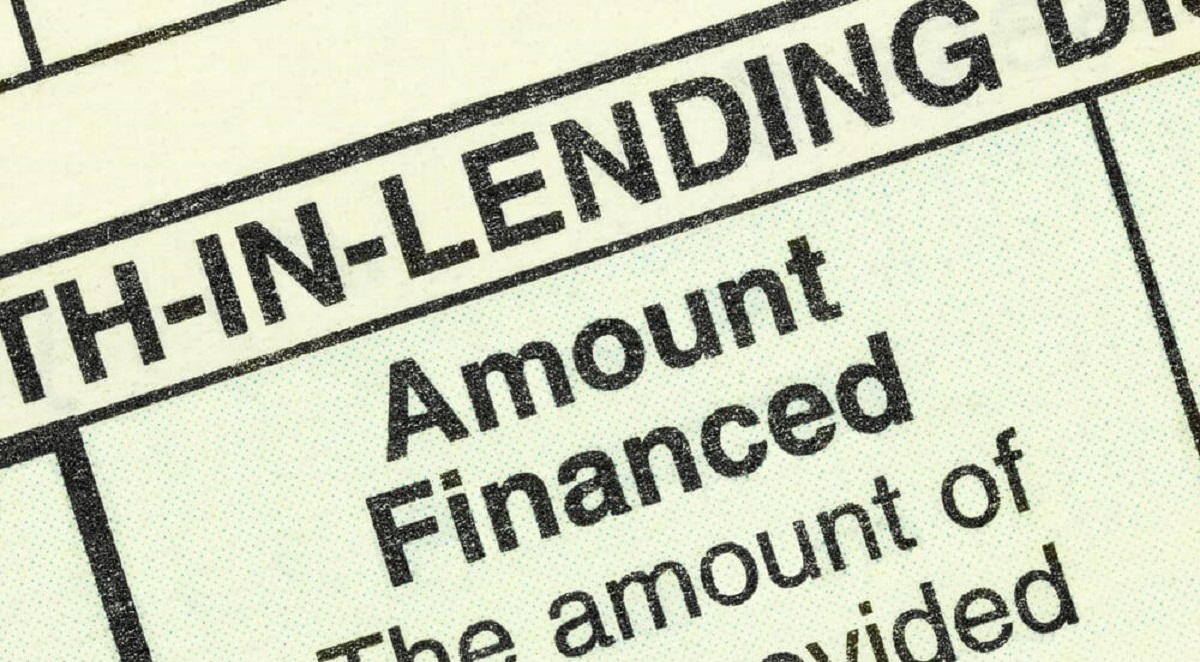Introduction
Welcome to our comprehensive guide on predatory lending. Predatory lending is a concerning issue that affects many individuals and families seeking financial assistance. It is important to understand what constitutes predatory lending, how to recognize the warning signs, and what steps to take if you find yourself in a predatory lending situation.
Predatory lending refers to unethical lending practices that take advantage of vulnerable borrowers. Lenders who engage in predatory lending often target individuals who have limited financial knowledge or are in desperate need of funds. These lenders exploit their borrowers through exorbitant interest rates, hidden fees, and deceptive terms and conditions.
The consequences of predatory lending can be severe, leading to financial instability, debt, and even foreclosure. It is crucial to be aware of the signs of predatory lending and to arm yourself with the knowledge and resources necessary to protect yourself.
In this guide, we will delve into the different types of predatory lending, identify common victims, and provide essential information on legal protections and preventive measures against predatory lending. Whether you are a first-time borrower or someone seeking to refinance existing loans, this guide aims to empower you with the knowledge to make informed financial decisions.
Please note that while this guide provides valuable information, it is not intended as legal advice. If you require specific advice regarding a predatory lending situation, it is recommended to consult with a qualified attorney.
Now, let’s explore the definition of predatory lending and how to recognize the warning signs to protect yourself from these unscrupulous practices.
Definition of Predatory Lending
Predatory lending refers to the unethical practices employed by certain lenders to exploit and take advantage of borrowers, often leaving them in a worse financial situation than before. These lenders target individuals who may have poor credit scores, limited financial knowledge, or are in desperate need of funds. They use deceptive tactics to trap borrowers in loans with unfavorable terms and conditions, trapping them in a cycle of debt.
There are several key characteristics and actions that define predatory lending:
- High interest rates: Predatory lenders often charge exorbitant interest rates that far exceed what is considered reasonable for the borrower’s credit history and financial status. These high rates can make it difficult for borrowers to repay the loan, leading to further financial strain.
- Hidden fees and costs: Predatory lenders may bury additional fees and costs within the loan agreement, making it challenging for borrowers to understand the true cost of the loan. These hidden fees can significantly increase the overall amount owed.
- Unfair loan terms: Predatory lenders may include unfair terms in the loan agreement that benefit the lender at the expense of the borrower. These terms may include excessive penalties for late payments or prepayment fees, making it difficult for borrowers to escape the debt trap.
- Deceptive practices: Predatory lenders often use deceptive tactics to mislead borrowers about the true costs and consequences of the loan. They may make false promises, provide incomplete or misleading information, or pressure borrowers into accepting loans without fully understanding the terms.
- Targeting vulnerable populations: Predatory lenders often target vulnerable populations, including low-income individuals, elderly adults, immigrants, and communities of color. These populations may have limited access to traditional financial resources and are more susceptible to predatory practices.
It is important to note that not all loans with high interest rates or non-traditional terms are considered predatory. The key distinction lies in the intent of the lender and whether they are intentionally exploiting borrowers by engaging in deceptive and unfair practices.
By understanding the definition of predatory lending and its key characteristics, you can better recognize the warning signs and protect yourself from falling victim to these unethical practices. In the following sections, we will explore the various types of predatory lending and provide guidance on how to safeguard your financial well-being.
Signs and Warning Signals of Predatory Lending
Recognizing the signs and warning signals of predatory lending is crucial to protect yourself from falling victim to these deceptive practices. Here are some key indicators to look out for:
- Unsolicited offers: Be cautious of lenders who reach out to you without your consent, especially through phone calls, emails, or door-to-door sales. Legitimate lenders usually require you to initiate the loan application process.
- Pressure to sign immediately: Predatory lenders often use high-pressure tactics, urging you to sign the loan agreement quickly without giving you time to review the terms and conditions or seek advice from a financial professional.
- Excessive interest rates and fees: Pay attention to the interest rates and fees associated with the loan. Predatory lenders often charge significantly higher rates than standard market rates. Be wary of hidden fees or charges buried within the loan agreement.
- Unaffordable payments: If the monthly payments for the loan seem unmanageable or disproportionately high compared to your income or expenses, it could be a warning sign that the loan terms are unfair or predatory.
- Complex and confusing terms: Predatory lenders may use complicated language or bury important details in the fine print. If you are having difficulty understanding the terms and conditions of the loan, it is essential to seek clarification before signing any documents.
- Negative reviews and complaints: Research the lender and read reviews or complaints from other borrowers. If there are numerous negative reviews indicating predatory practices, it is best to steer clear of that lender.
- Unlicensed lenders: Ensure that the lender is licensed and registered with the appropriate regulatory authorities. Unlicensed lenders may operate outside the law and are more likely to engage in predatory lending practices.
These signs and warning signals are not exhaustive, but they serve as a starting point to help you identify potential predatory lending situations. Trust your instincts and exercise caution when dealing with any lender.
If you encounter one or more of these warning signs, it is crucial to step back, gather more information, and seek assistance from a reputable financial advisor or housing counselor. They can help you evaluate the loan terms, identify any red flags, and explore alternative borrowing options.
Next, we will explore the different types of predatory lending that you should be aware of.
Types of Predatory Lending
Predatory lending takes various forms, all with the common goal of exploiting borrowers for financial gain. Understanding the different types of predatory lending can help you identify potential risks and make informed decisions. Here are some common types of predatory lending:
- Payday Loans: Payday loans are short-term loans with high interest rates that are typically due on the borrower’s next payday. Predatory payday lenders often target low-income individuals who urgently need cash and may trap borrowers in a cycle of repeated borrowing due to the difficulty of repaying the loan in full.
- Predatory Mortgage Loans: Predatory mortgage loans typically include high-interest rates, excessive fees, and unfair terms. These loans can lead to unmanageable monthly payments, foreclosure, and financial devastation for homeowners.
- Predatory Auto Loans: Predatory auto loans may involve inflated interest rates, hidden fees, and unnecessary add-ons. Lenders may also engage in “yo-yo financing,” where they pressure borrowers into signing the loan agreement, only to later claim that the original financing fell through and demand higher interest rates or down payments.
- Title Loans: Title loans are secured by the borrower’s vehicle title. Predatory title lenders often charge exorbitant interest rates, putting the borrower at risk of losing their vehicle if they are unable to repay the loan.
- Debt Consolidation Scams: Predatory lenders may target individuals struggling with debt by offering debt consolidation loans with unrealistic promises of lowering monthly payments or interest rates. In reality, these lenders may charge excessive fees and fail to provide the promised relief.
- Predatory Student Loans: Predatory student loans often target vulnerable students who are seeking financial assistance for education. These loans may have inflated interest rates, hidden fees, and ambiguous repayment terms, leading to long-term financial burdens.
It’s important to be vigilant when considering any loan or credit agreement and closely examine the terms and conditions to ensure they are fair and transparent. Take the time to compare loan offers, seek advice from financial professionals, and consult trusted sources to avoid falling into the trap of predatory lending.
Now that we’ve explored the types of predatory lending, let’s discuss the common victims of these practices and the importance of legal protections.
Common Victims of Predatory Lending
Predatory lending can affect individuals from various socioeconomic backgrounds, but certain groups are more vulnerable to falling victim to these unethical practices. It is essential to understand who the common victims of predatory lending are in order to advocate for stronger consumer protections and support targeted outreach and education efforts. Here are some groups that often face a higher risk of being targeted by predatory lenders:
- Low-income individuals: Predatory lenders prey on low-income individuals who may have limited access to traditional banking services and may be in urgent need of funds. These individuals are often more susceptible to accepting unfavorable loan terms due to financial desperation.
- Elderly adults: Elderly adults can be particularly vulnerable to predatory lending practices due to limited financial literacy, cognitive decline, or isolation. They may be targeted by scammers offering false promises of financial assistance or exploiting their home equity through predatory mortgage loans.
- Minorities and communities of color: Studies have shown that predatory lending disproportionately affects minority communities. Discrimination and historical disparities in access to credit and financial resources make these individuals more susceptible to predatory lenders who exploit their financial hardships.
- Individuals with poor credit: Borrowers with poor credit scores often face difficulties obtaining loans from traditional lenders. Predatory lenders may take advantage of their desperation by offering loans with excessive interest rates and unfair terms.
- Immigrants and non-native English speakers: Predatory lenders may target immigrants and non-native English speakers who may have limited financial knowledge, language barriers, and lack of awareness of consumer protection laws. These individuals may be more easily deceived by lenders using complex and confusing loan terms.
It is important to remember that anyone can fall victim to predatory lending, regardless of their background or financial situation. Predatory lenders thrive by exploiting vulnerabilities and financial hardships, taking advantage of individuals in need of financial assistance.
In order to combat predatory lending, it is crucial to educate and empower vulnerable populations to make informed financial decisions. Strengthening consumer protections and enforcing regulations can also help safeguard individuals from these exploitative practices.
Now, let’s explore the legal protections available to borrowers and how to protect ourselves from falling victim to predatory lending.
Legal Protections Against Predatory Lending
To combat the prevalence of predatory lending, various legal protections have been established to safeguard borrowers from unfair and deceptive practices. These protections aim to ensure that lenders operate ethically and provide borrowers with transparent and equitable lending terms. Here are some important legal provisions and regulations in place:
- Truth in Lending Act (TILA): The Truth in Lending Act requires lenders to disclose key information about a loan, including the annual percentage rate (APR), total loan amount, payment terms, and any applicable fees. This helps borrowers understand the true cost of the loan and make informed decisions.
- Home Ownership and Equity Protection Act (HOEPA): HOEPA targets high-cost mortgages and provides added protections for borrowers. It sets forth requirements related to loan terms, counseling, and disclosures for high-cost mortgage loans.
- Military Lending Act (MLA): The MLA aims to protect active-duty military members and their families from predatory lending practices. It sets limits on interest rates, prohibits certain loan terms, and requires lenders to provide additional disclosures to military borrowers.
- Equal Credit Opportunity Act (ECOA): ECOA ensures that borrowers are not discriminated against based on race, color, religion, national origin, sex, marital status, age, or other protected statuses. It promotes fair and equal access to credit for all individuals.
- State-specific Predatory Lending Laws: Many states have enacted their own laws and regulations to combat predatory lending practices. These laws may include stricter regulations on interest rates, fees, and loan terms.
These legal protections provide a framework for borrowers to hold lenders accountable for their actions. It is crucial for borrowers to familiarize themselves with their rights under these laws and regulations and actively seek legal advice if they suspect predatory lending practices.
In addition to legal protections, it is important to stay informed and exercise caution when entering into any loan agreement. Carefully review the terms and conditions, seek clarification on any unclear aspects, and compare offers from multiple lenders to ensure that you are getting the best possible terms.
By being aware of your rights and the legal protections available, you can better protect yourself from falling victim to predatory lending practices. In the next section, we will discuss proactive steps you can take to safeguard yourself from these unscrupulous practices.
How to Protect Yourself from Predatory Lending
Safeguarding yourself from predatory lending requires proactive steps and careful consideration when seeking financial assistance. By following these guidelines, you can reduce the risk of falling victim to unethical lending practices:
- Educate yourself: Take the time to learn about different loan types, interest rates, and common lending practices. Understand how to calculate the true cost of a loan, including fees and other potential charges.
- Research lenders: Before choosing a lender, conduct thorough research. Check their reputation, read reviews, and verify their legal standing. Reputable lenders will be transparent about their terms and have positive feedback from borrowers.
- Shop around: Don’t settle for the first loan offer you receive. Compare rates, terms, and fees from multiple lenders to find the most favorable options. This allows you to make an informed decision and potentially save money in the long run.
- Read and understand the fine print: Carefully review all loan documents, including the terms and conditions, before signing. Pay attention to interest rates, fees, repayment schedules, and any hidden clauses. If something is unclear, seek clarification from the lender.
- Seek professional advice: Consult with a reputable financial advisor or housing counselor who can provide guidance and review loan offers with you. They can help you understand the terms, identify any red flags, and offer alternatives if necessary.
- Beware of high-pressure sales tactics: Be cautious of lenders who use aggressive sales tactics or push you to make immediate decisions. Take your time to evaluate the loan offer and consult with professionals before committing.
- Know your credit score: Being aware of your credit score can give you an idea of the interest rates and loan options you may qualify for. Maintaining good credit can help you negotiate better terms and avoid predatory practices.
- Understand your rights: Familiarize yourself with your rights as a borrower. Be aware of applicable consumer protection laws, such as the Truth in Lending Act, Equal Credit Opportunity Act, and state-specific lending regulations.
- Report predatory lending: If you have been a victim of predatory lending, report the incident to the appropriate authorities, such as your state attorney general’s office, the Consumer Financial Protection Bureau, or local consumer protection agencies. By reporting these practices, you help protect others from falling into the same trap.
By following these guidelines, you can significantly reduce the likelihood of becoming a victim of predatory lending. Remember, taking the time to research, read the fine print, and seek professional advice can save you from financial distress in the long run.
In the next section, we will discuss the steps to take if you have unfortunately fallen victim to predatory lending.
Steps to Take if You Have Fallen Victim to Predatory Lending
If you find yourself trapped in a predatory lending situation, it’s important to take immediate action to protect your rights and mitigate further financial damage. Follow these steps if you have fallen victim to predatory lending:
- Gather all documentation: Collect all loan documents, communication records, and any other relevant information related to the loan. These will serve as evidence of the unfair or deceptive lending practices.
- Contact the lender: Reach out to the lender to address your concerns and attempt to resolve any issues. Express your dissatisfaction with the terms and explain the reasons why you believe the loan is predatory. Keep a record of all conversations and correspondence with the lender.
- Consult with a legal professional: Seek advice from a qualified attorney who specializes in consumer law or predatory lending. They can assess your situation, review the loan documents, and provide guidance on available legal options.
- File a complaint: Report the predatory lending practices to the appropriate regulatory authorities. This may include filing a complaint with your state attorney general’s office, the Consumer Financial Protection Bureau (CFPB), or other relevant agencies. Provide them with all the necessary documentation to support your case.
- Consider legal action: If the lender is unresponsive or unwilling to address your concerns, consult with your attorney about the possibility of pursuing legal action. They can guide you on the best course of action based on your specific circumstances.
- Seek debt counseling: If you’re struggling with unmanageable debt resulting from predatory lending, consider seeking assistance from a reputable credit counseling agency. They can help you develop a plan to manage your debts and provide advice on improving your financial situation.
- Monitor your credit: Regularly monitor your credit reports to ensure that no unauthorized accounts or negative marks have been reported. If you notice any discrepancies, dispute them immediately with the credit reporting agencies.
Remember, navigating through a predatory lending situation can be challenging, but taking these steps can help you regain control of your financial well-being. It’s crucial to consult with professionals who can guide you through the process and advocate for your rights.
In the next section, we will provide resources for reporting predatory lending practices and seeking assistance.
Resources for Reporting Predatory Lending Practices
If you have experienced or witnessed predatory lending practices, it is important to report them to the appropriate authorities. Reporting predatory lending helps protect others from falling into the same traps and can contribute to regulatory investigations and enforcement actions. Here are some key resources for reporting predatory lending:
- Consumer Financial Protection Bureau (CFPB): The CFPB is a federal agency focused on protecting consumers in the financial marketplace. You can submit a complaint online through their website or contact their toll-free hotline to report predatory lending practices.
- State Attorney General’s Office: Each state has an Attorney General’s Office responsible for enforcing consumer protection laws. Visit your state’s Attorney General website to find information on how to file a complaint regarding predatory lending practices.
- Local Consumer Protection Agencies: Many cities and counties have their own consumer protection agencies that handle complaints related to predatory lending. Check with your local government to find out if there are specific agencies you can reach out to for assistance.
- Federal Trade Commission (FTC): The FTC works to protect consumers and prevent fraudulent, deceptive, and unfair business practices. You can file a complaint with the FTC online or contact their toll-free hotline to report predatory lending practices.
- HUD Housing Counseling Agencies: The U.S. Department of Housing and Urban Development (HUD) provides housing counseling services to individuals facing predatory lending issues. HUD-approved counseling agencies can offer advice and assistance in addressing predatory lending concerns.
- Nonprofit Legal Aid Organizations: Nonprofit legal aid organizations specialize in providing free or low-cost legal assistance to individuals who have been victims of predatory lending. Search for local legal aid organizations in your area to seek legal guidance and representation.
It is important to provide as much detail as possible when reporting predatory lending practices. Include copies of loan documents, communication records, and any other relevant information to support your complaint. The more comprehensive and specific your complaint is, the better equipped authorities will be to investigate and take appropriate action.
Remember, reporting predatory lending not only helps protect yourself, but also contributes to the collective effort in combating these unscrupulous practices.
In the final section, we will conclude the guide on predatory lending and summarize the key takeaways.
Conclusion
Predatory lending is a serious issue that can have devastating consequences for borrowers. By understanding what constitutes predatory lending, recognizing the warning signs, and knowing how to protect yourself, you can minimize the risk of falling victim to these unethical practices.
In this guide, we explored the definition of predatory lending and the signs to watch out for. We discussed common types of predatory lending, including payday loans, predatory mortgage loans, and title loans. We also identified vulnerable populations, such as low-income individuals, elderly adults, and minorities, who are often targeted by predatory lenders.
Legal protections, such as the Truth in Lending Act and the Equal Credit Opportunity Act, are in place to safeguard borrowers. It is essential to know your rights and seek professional advice when needed. Additionally, we provided resources for reporting predatory lending practices and seeking assistance from organizations like the Consumer Financial Protection Bureau and state Attorney General’s Office.
Ultimately, protecting yourself from predatory lending requires education, diligence, and careful consideration when engaging in any financial transaction. By researching lenders, understanding loan terms, and seeking professional advice, you can make informed decisions that align with your financial well-being.
If you have fallen victim to predatory lending, it’s crucial to take immediate action by gathering documentation, contacting the lender, and seeking legal advice. Reporting these practices to the appropriate authorities is vital in preventing others from enduring the same challenges.
Remember, knowledge is power when it comes to avoiding predatory lending. Stay informed, be proactive, and advocate for yourself and others. Together, we can combat predatory lending and promote fair and ethical financial practices.

























